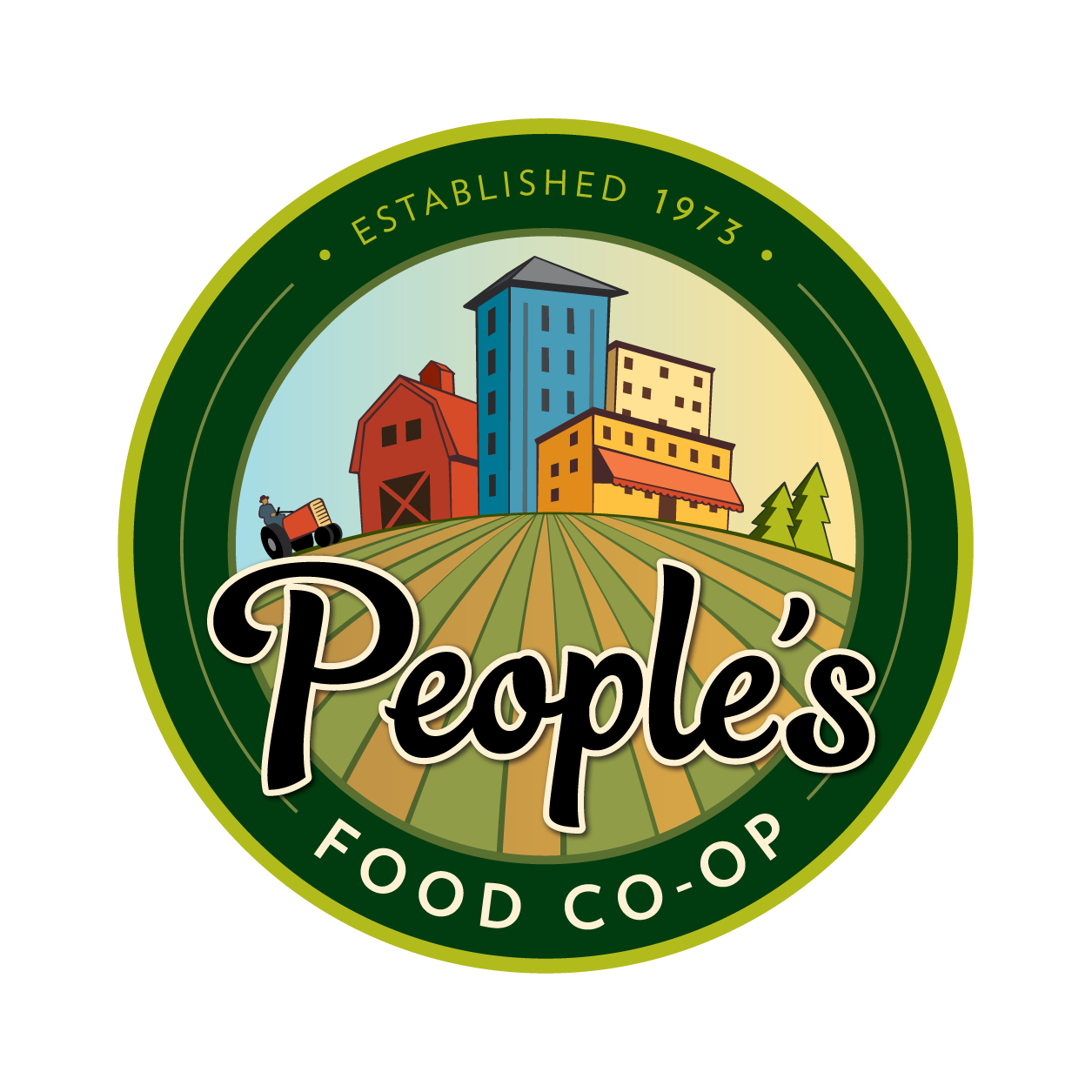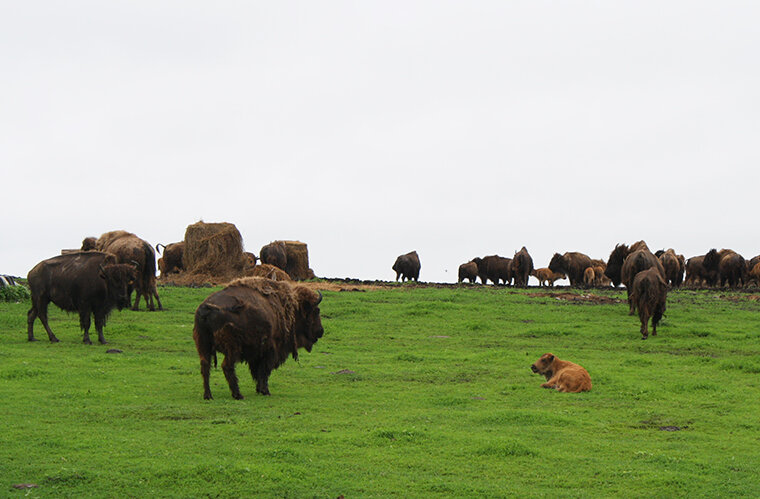Buffalo Hills Bison
Steve Fruechte of Buffalo Hills Meats keeps two large Newfoundland dogs at his farm, Tipper and Tootsie. They’re four-year-olds and big, slow-moving monster dogs, but compared to the bison in the pasture these guys are tiny.
Steve and his wife, Linda, had some pasture in the early 1990s that they wanted to put to use, but the beef market at the time didn’t look promising, so they decided to try raising bison. They started with 10 and the herd has grown to 250 animals.
Steve remembers that in the ’90s a number of Minnesota cattle people switched to bison. “A lot of beef ranchers thought they’d get into it when the beef prices dropped. They didn’t keep with it though. Those guys thought they were going to run their bison like they did their cattle. The bison don’t go for that.”
Bison–cattle trade-offs
Richard Manning, environmental author and journalist, points out that when the Europeans arrived on the North American plains there were about 50 million buffalo spread out over the country. According to the National Cattleman’s Beef Association, in 2016, there were about 31 million beef cattle in the United States. Cattle require technology, subsidies, and if it snows real hard—which it does often in the Great Plains States—they up and die. Bison, on the range, need no grain, little labor, no subsidies, and they like the snow. Today, there are about 500,000 bison—wild and farm—in North America.
According to Lakota legend, before the earth was finished, the people lived in the Tunkan Tipi, the Lodge of the Ancients, waiting for the earth to be made ready. A trick played by two banished spirits—Iktomi the trickster and Anog-Ite, the Double-Faced Woman—caused a small group of these humans to travel to the Earth too early. In punishment for their disobedience, the Creator turned these people into the first bison herd. Later, when the second wave of humans arrived, they were instructed to follow the bison.
Steve Fruechte is one who follows the bison. And he’s here to tell you that they will not follow you. “You don’t run bison. Bison run you.” The dogs, big as they are, do not play in the fields with the bison. The bison would kill them. The cows are very protective of their calves. “I used to have a little retriever that’d go out in the field and play with the calves. The mother bison would get pretty upset. I’ve found dead coyotes out in that pasture. The bison don’t like dogs. That dog was so confused, but he learned to not go out there when the bison are around.”
Steve grew up on a farm and had run cattle on his father’s farm when he was a boy. “We had beef cattle when I was in high school, but when I went to college, Dad lost his help.”
It’s a different business than working with cattle. “Their speed, for one thing,” Steve says. “And if they don’t want to go somewhere, they don’t go.”
You need bigger fences for bison. A couple of low-voltage wires won’t make much difference to a determined buffalo. There’s less handling of the animals, which means less labor. If anything, the learning curve mainly involved figuring out how to get out of their way: “They’re boss and I know it. I learned to watch their tails. If it’s swinging, they’re happy, but if it stops and the tail goes up, you watch out. You’re doing something she don’t like.”
Their big winter coats are effective in Minnesota winters. “They’ll face into the wind when a storm comes up,” Steve says. “A beef will lay butt into the wind and the snow will cover them over and they’ll suffocate. I’ve seen the bison completely covered with snow after a storm and when it’s over, they’ll all stand up and just shake it off.”
Although they seem taller than cattle, the bison, up close, look like they have a thinner profile. A steer looks like a box set on four legs; the bison, on the other hand, are pyramidal and not interested in humans at all.
Steve Fruechte of Buffalo Hills.
Following the bison
Buffalo Hills is not organic. The bison eat grass in the pasture for the summer months, but in the fall after harvest, they’re turned out into the fields to graze on the stalks and leaves of the corn and soybeans. Fruechte farms conventional corn and beans. “They really like corn leaves and any husks they can find,” he says.
Overall, Steve finds they require much less handling than cattle. “Bison are more disease-resistant. The only thing we do more of is parasite control. You’ve got to worm them. I used to do more vaccinations, but over the years we’ve really cut back. We haven’t had any problems with disease and they don’t like the vaccinations anyway.”
The bison also get a portion of hay. The pasture size varies with the season from 100 to 160 acres. The farm supplements the grass with hay—which Fruechte believes helps balance the wet-grass diet with dry.
Sales of bison are a little better each year, Steve reports. Both Rochester and La Crosse PFCs carry Buffalo Hills bison. “We supply steaks, roasts, burger, jerky,” Steve says. “Wherever your recipe calls for beef, you can substitute bison. If you want something special, a whole rib-eye or tenderloin, you can talk to Jason or Ethan” (La Crosse and Rochester meat department managers), and they’ll make the arrangements.
It’s still a family operation. Steve doesn’t see the operation getting any bigger than it is. “I’ll keep doing it until it’s no fun anymore.”
This article was originally published in the Fall 2018 Co-op Shopper.


